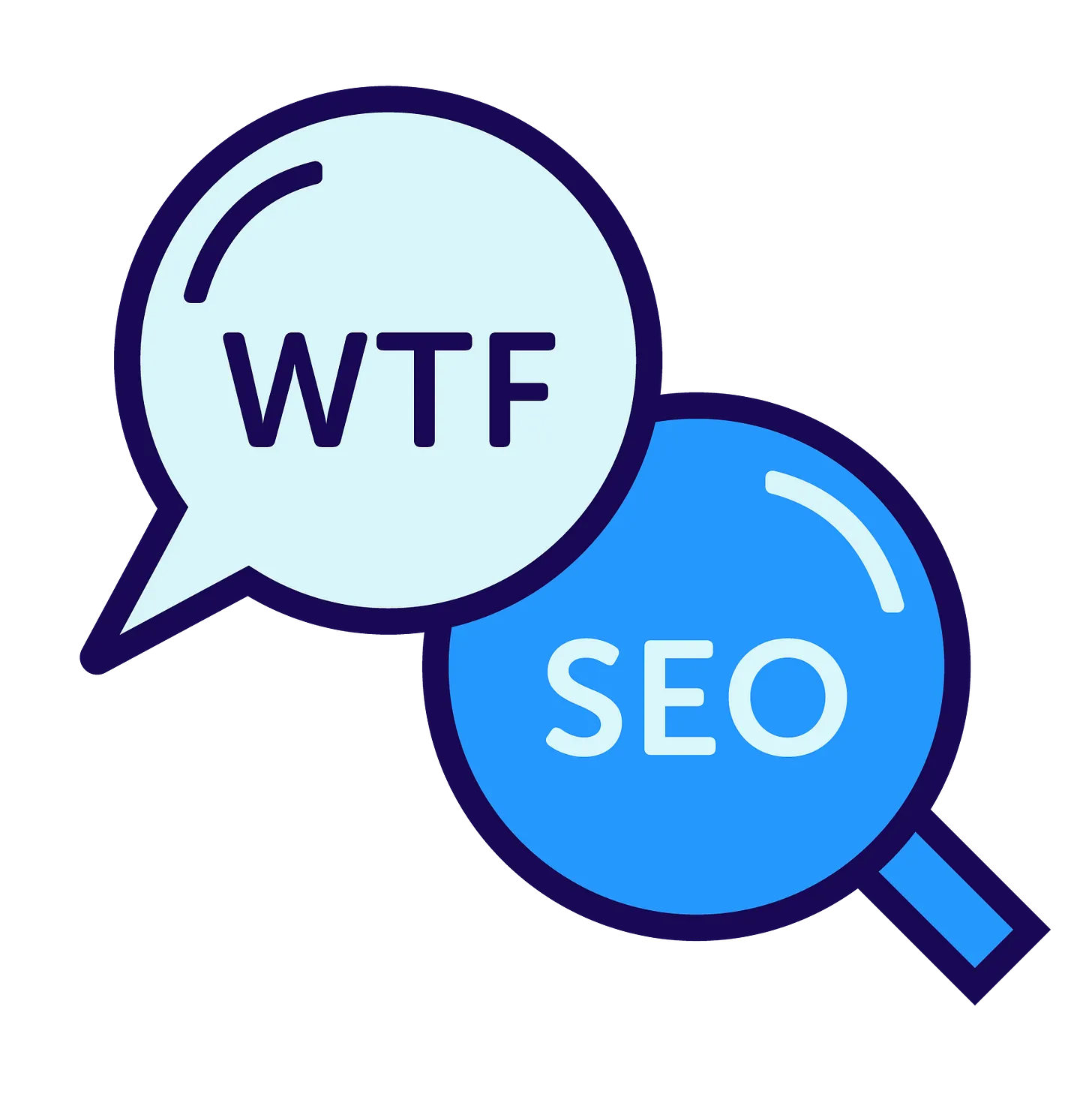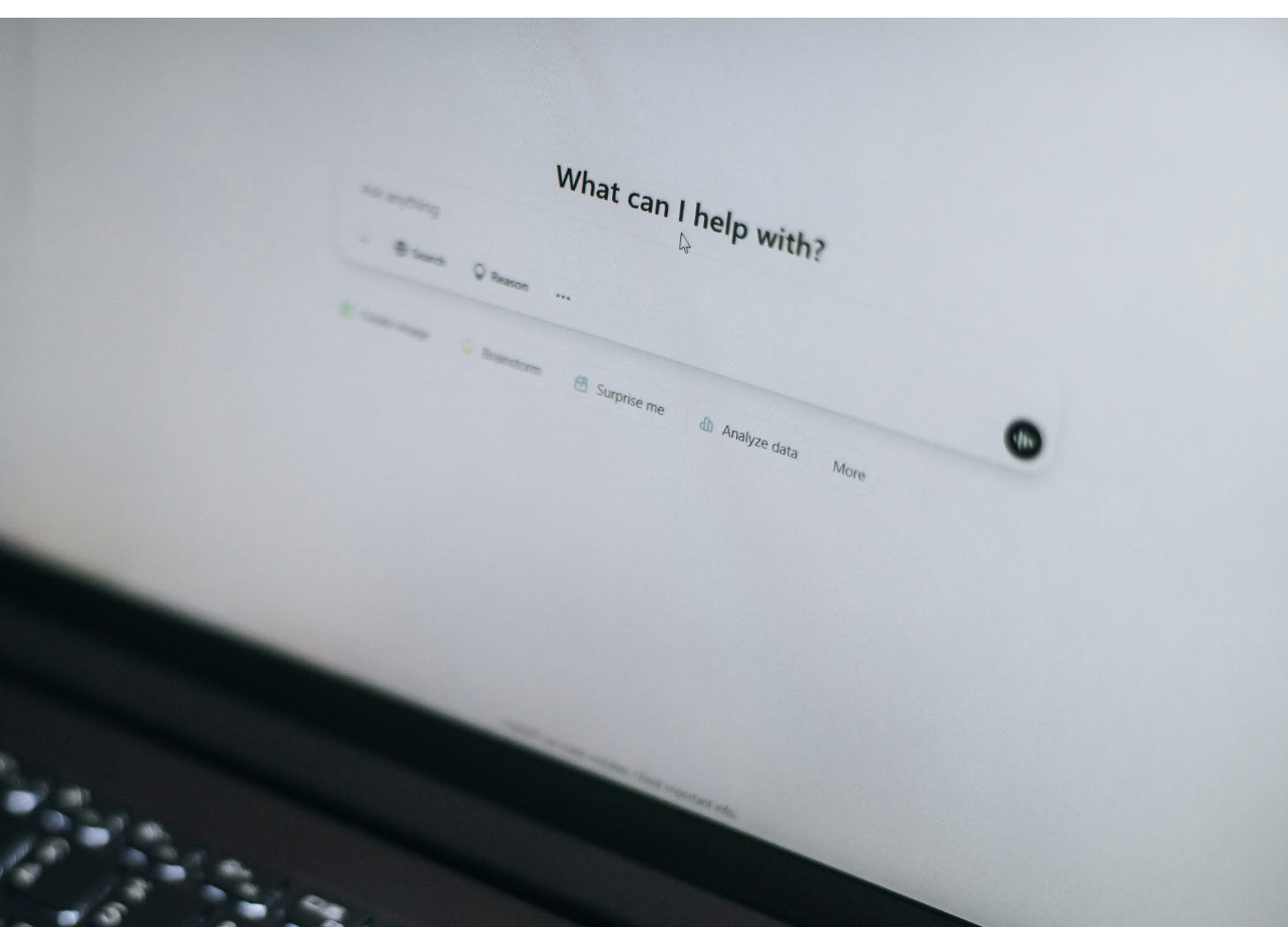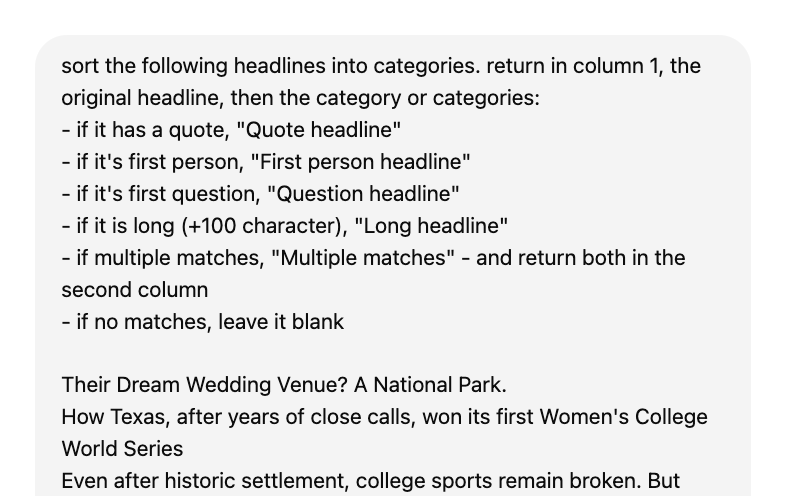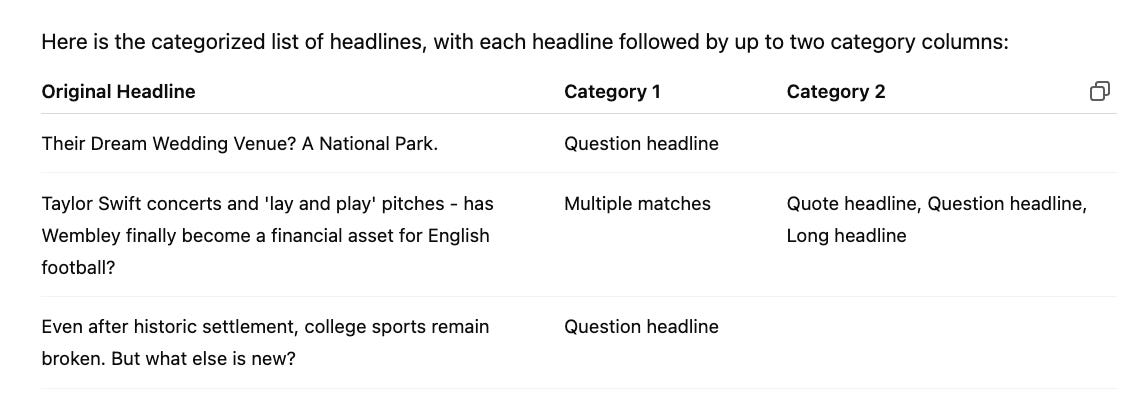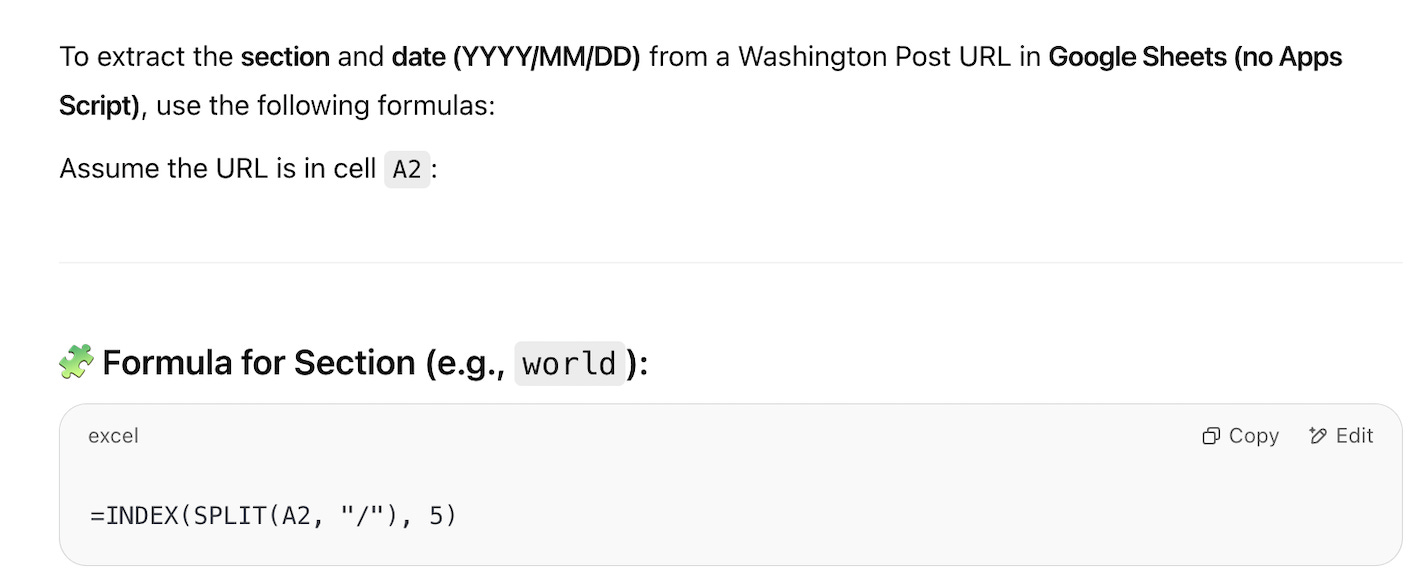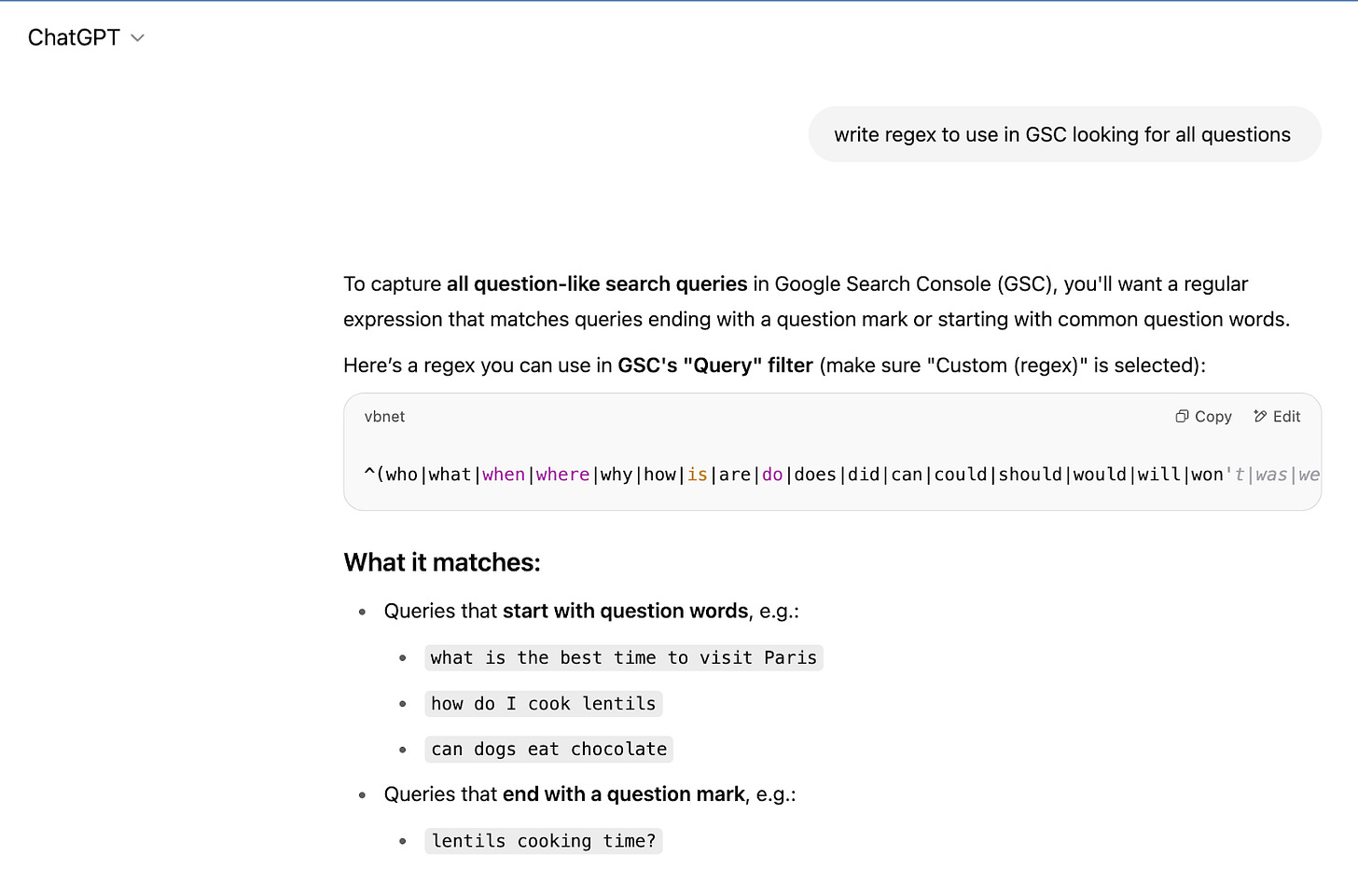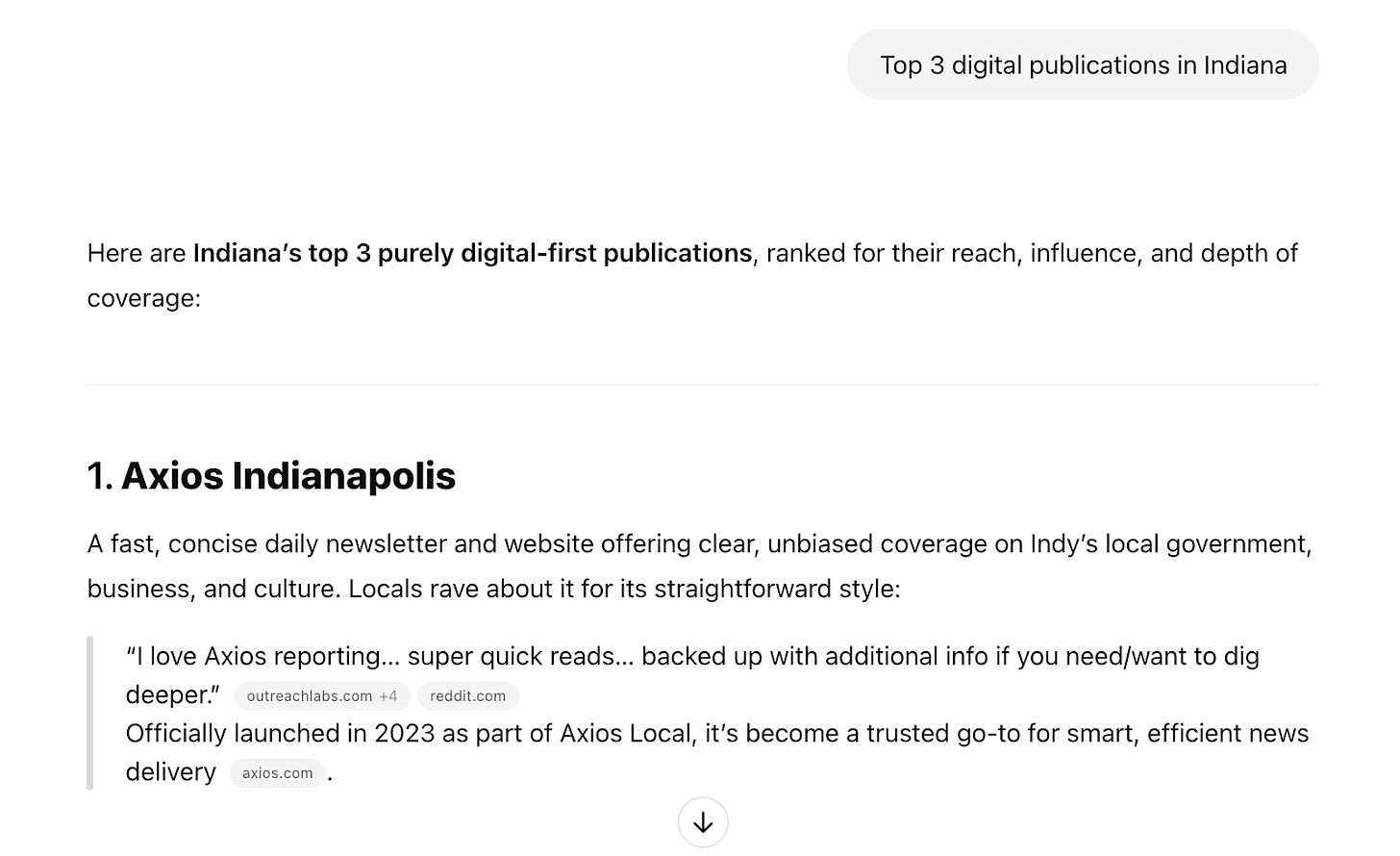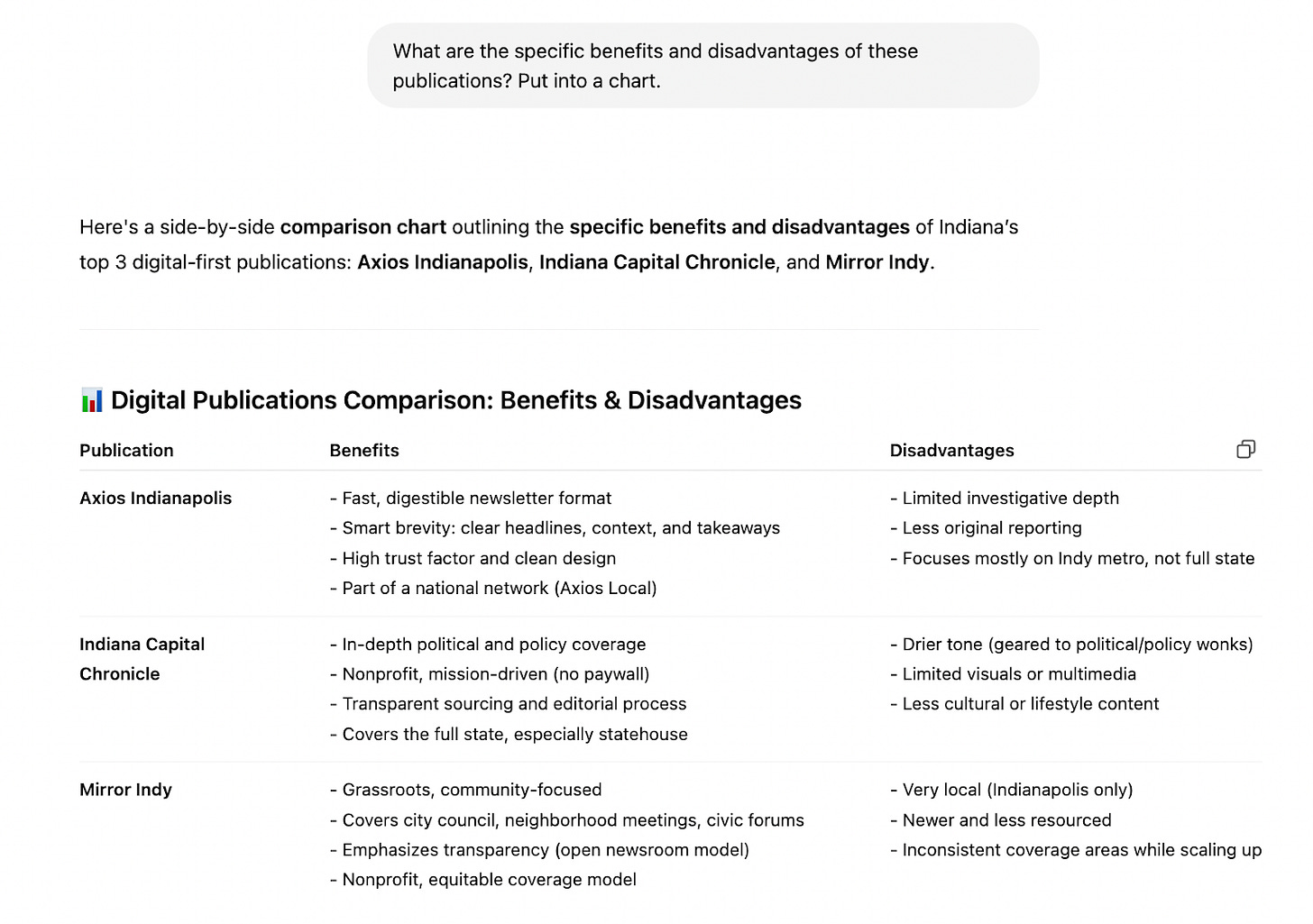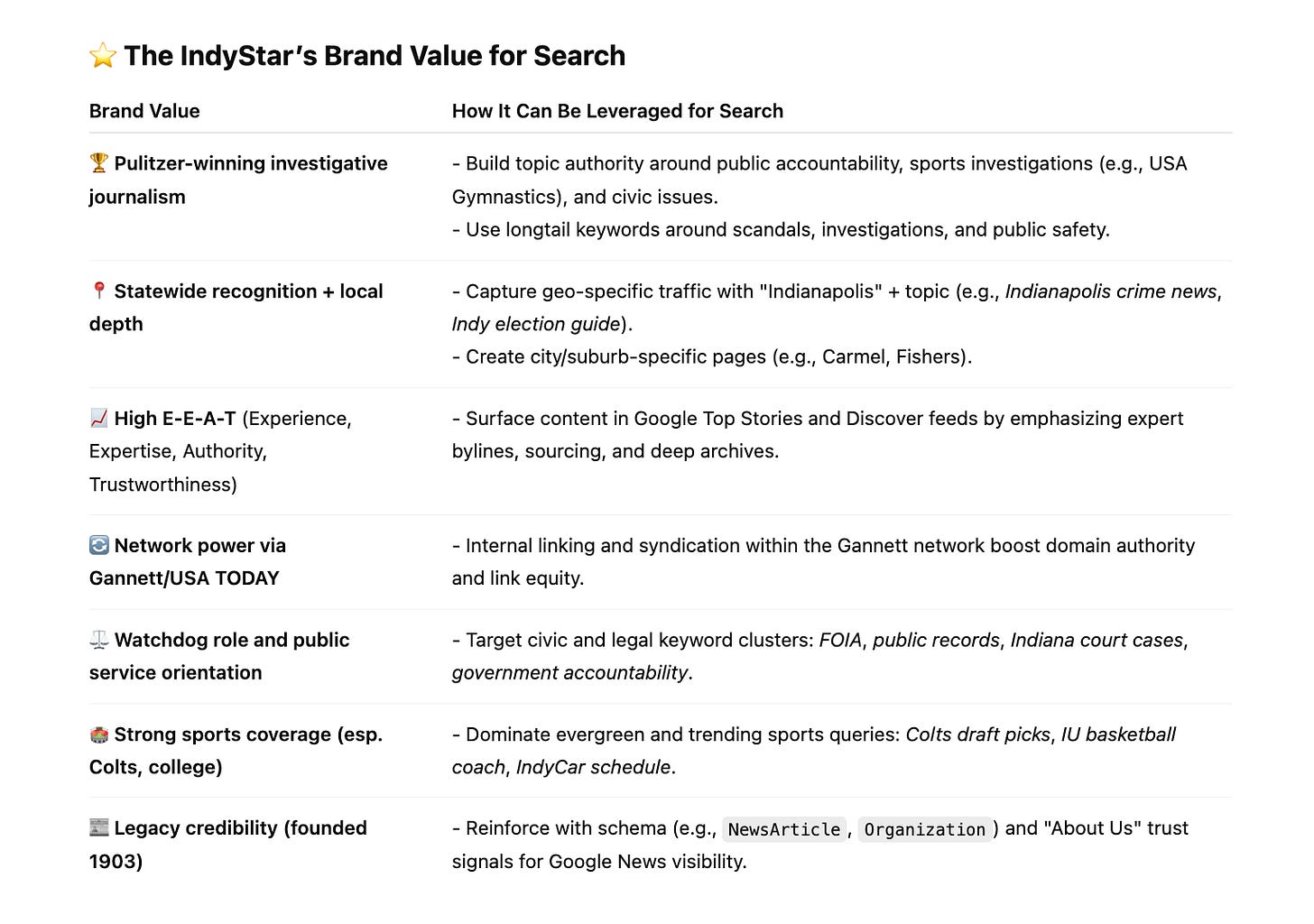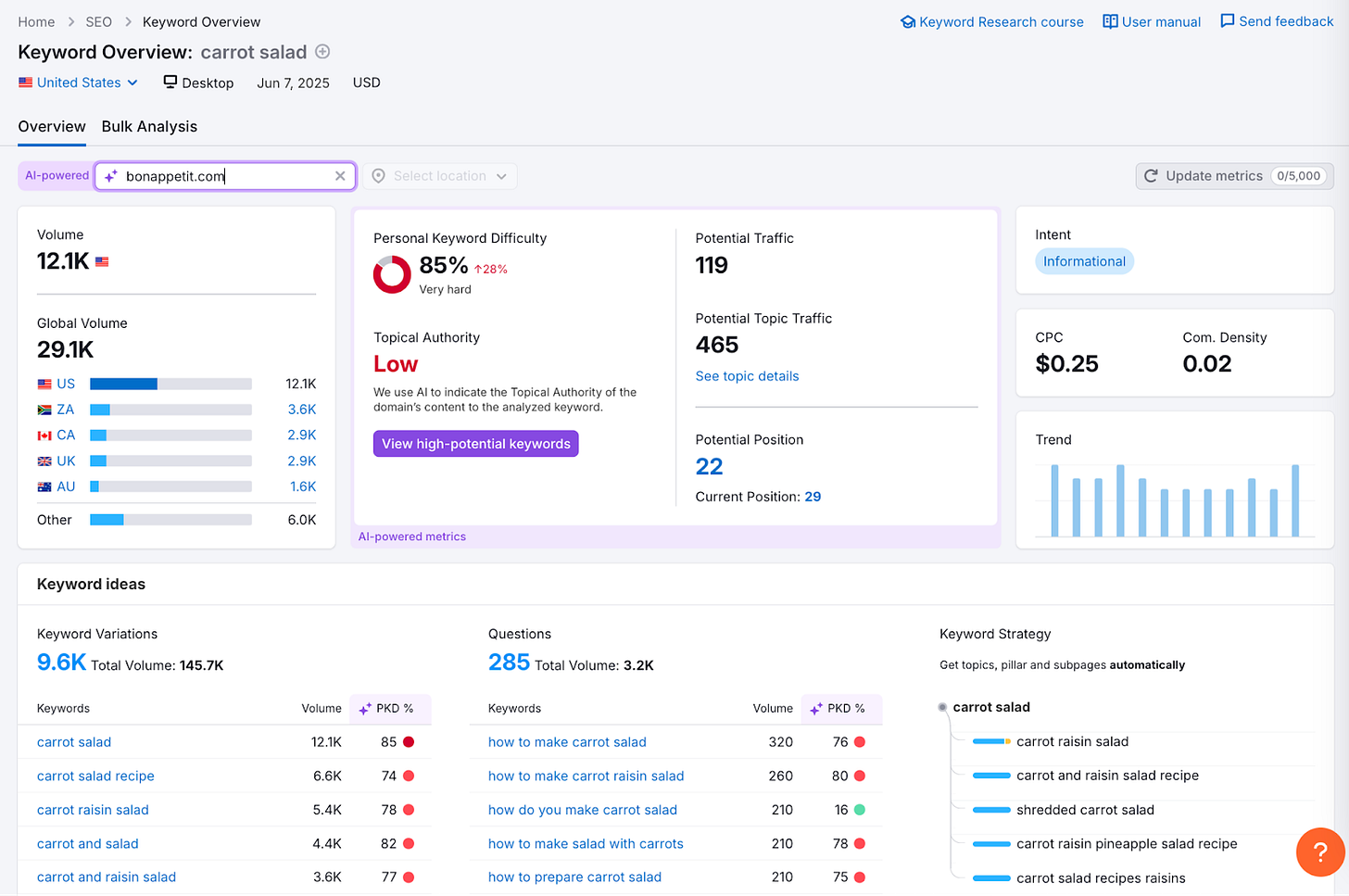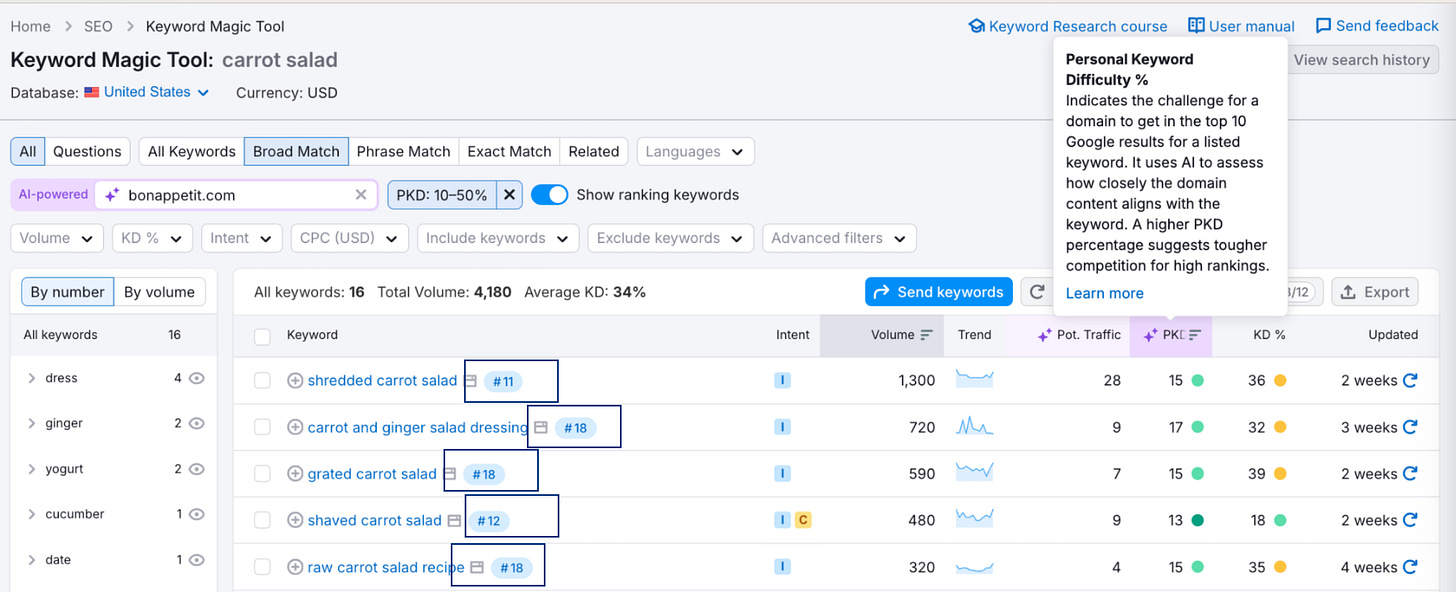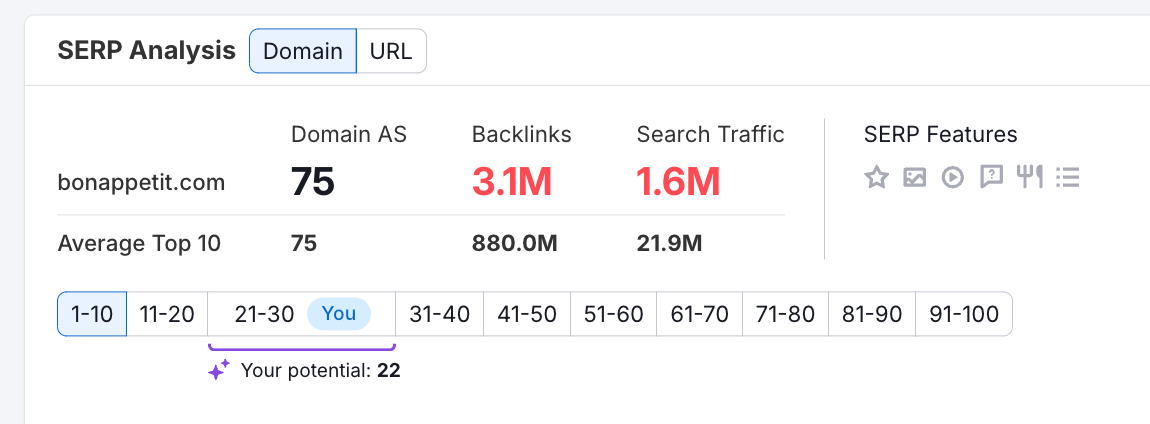3 AI tools for news SEO
We walk through some of the tools in our workflow that make use of artificial intelligence for news SEO
Join our Top Stories panel on June 18th!
As news on Google Search evolves, what do publishers need to know? Join our panel discussion for a candid conversation on visibility, volatility and strategic approaches to help newsrooms stay competitive, in partnership with with Trisolute News Dashboard. Join us Wednesday, June 18 at 11 a.m ET/3 p.m. GMT.
Hello, and welcome back. Jessie and Shelby here, back from the first truly nice summer weekend in Toronto. Jessie spent an afternoon wandering a street festival with pals, and at night being charmed by Josh Johnson’s very funny gig. Meanwhile, Shelby finally found the perfect pair of jeans and spent far too much money on skincare. Sometimes, you just have to treat yourself.
This week: Three tools for AI and four ways to use them. We walk through some of the tools in our workflow that make use of artificial intelligence for news SEO. That includes two approaches to prompts for ChatGPT, AI integrations in big-name tools and more.
Plus: Send us your best/favourite ways to use AI for news SEO, or best tools. We’ll round up your picks into a future newsletter!
Let’s get it.
In this issue:
ChatGPT for data wrangling and analysis
ChatGPT for competitive analysis and brand awareness
AI integrations in Semrush
Ahrefs AI Content Helper
THE 101
3 tools (and 4 ways) to use AI
Here are three AI tools — and two ways to use ChatGPT — that news SEOs may find useful to support their SEO strategy. This isn’t an exhaustive list, but rather a selection of tools we use in our daily workflows. (Note: none of the tools are WTF is SEO? sponsors.)
🛑 A huge caveat: A lot of big publications are in litigation with OpenAI over the use of their content in its models. Review your company's AI policies before using any AI tool.
ChatGPT: Data wrangling and analysis
What it does: ChatGPT can be very useful for data wrangling and analysis (caveat: fact-check everything; ChatGPT is still a robot!).
Why it’s helpful: It can handle some data work, freeing up your time for more comprehensive audience/SEO analysis. Here are three data-centric things ChatGPT does well.
Headline analysis
To understand what types of headlines perform best (e.g., long, short, first-person, etc.), the first step is to categorize each title. Provide ChatGPT the categories and headlines in your prompt, asking it to sort into each. Ask for a table and tell it to not skip any rows.
ChatGPT will provide a response that looks like this:
Extract data from a URL
When working with data exported from Google Search Console, you’re limited in the information you have access to (i.e., the URL and performance metrics). It can be helpful to use information in the URL for further analysis (i.e., if your URL has section folders, what sections have the best click-through rates? Or if dates are involved, using extracting those for further analysis).
Instead of wrangling the data in spreadsheets, ask ChatGPT to do the formatting.
Writing regex for data analysis
Writing regex for data analysis (including in GSC) can be a nightmare. Get ChatGPT to do it for you!
In this example, ChatGPT was asked to return a fairly complex regular expression. The prompt asks for a regex that filters for all queries containing questions.
To analyze for branded search, ask for a regex that collects all terms related to your brand, including common variations and misspellings.
Note that the GPT also returns a boundary to avoid matches for words containing “star” like "starbucks." Advanced regular expression written in mere seconds!
🔥 Pro tip: ChatGPT has tips for doing data analysis with its platform, including using clear, jargon-free column headers that are descriptive of the data, not including multiple tabs in one sheet and file size limitations.
ChatGPT: Competitive analysis and brand awareness
What it does: ChatGPT can also help you analyze your competitors, making it easier to spot key differences, similarities and new opportunities.
As AI becomes a bigger part of a reader’s day-to-day life, brand awareness is even more important. Brands that people know and are familiar with are more likely to be clicked on. With fewer opportunities to be visible, increasing brand awareness is key.
Why it’s helpful: Any area of audience (social, search, programming, etc.) can use prompts for analysis about your brand, as well as competitors.
A few useful prompts to start:
What are the top [digital/tv/radio/newsletter] publications in [state/province/city]?
What are the pros and cons/benefits and disadvantages of these publications? Put it in a table.
What is the [publication’s] brand value that can be leveraged on search/social/the homepage?
How do I take action on the above right now in 3 bullet points?
How does [publication] build its topic authority within AI?
Give me reasons why [publication] can’t keep up with [competitor(s)]. Put in a table.
In the example below, ChatGPT was asked what Indiana’s top digital publications are. By specifying the format (digital, radio, or television, etc.), you ensure the results align with your preferred type of content (e.g., The Globe and Mail may consider the CBC a competitor, but the CBC has a ton of television content. This excludes that part of their business).
ChatGPT often returns “honourable mentions," including reasons they didn't make the cut. If your publication is in here, it’s a good place to start: are there specific tactics you can employ to fix that flaw?
From there, ask about each publication’s strengths and weaknesses. Include how ChatGPT should format the response.
🔥 Pro tip: If you’d like to swap out a publication, include “Use BRAND instead of BRAND in the analysis” in your prompt.
From here, you can analyze each competitor in more depth.
Another approach is using ChatGPT to summarize a competitor's brand visibility — something that will become even more important as AI use increases.
Ask ChatGPT to return a table highlighting components of the brand's value and how it can be leveraged for search.
Semrush
What it does: Semrush has several AI integrations within its tool (including its AI Marketing Booster helps automate tasks like assessing the E.E.A.T. signals of content).
Within the Keyword Overview tool, Semrush uses AI to power domain-specific recommendations, and calculates a Personal Keyword Difficulty (PKD) score — how hard it is for that specific brand to compete on a term.
In the screenshot below, the keyword “carrot salad” has a personalized difficulty score of 85 per cent for Bon Appetit (compared to an overall average difficulty of 57 per cent). It also scores “low” for topical authority. The PKD is also provided for each keyword in the “Keyword Ideas” section.
Clicking into the Keyword Magic Tool, AI informs personalized potential traffic estimates, too, outlining the “potential traffic you are likely to get with quality content focused on the analyzed keyword.”
🔥 Pro tip: “Show ranking keywords” adds the position that the site is currently ranking for each keyword (e.g., Bon Appetit is ranking in spot #11 for “carrot salad.”) It's a nice addition and saves an extra click to SERP Analysis in the overview panel.
Within the SERP Analysis, Semrush uses AI to highlight where on the results a publisher can hope to rank (“your potential”).
🛑 Heads up: When preparing SEO briefs or internal reports, news SEOs should flag that AI has shaped the data, and that metrics like total search opportunity or keyword volume may not align with reporting in other tools.
What else to know: Test these tools to gauge their utility for your newsroom. It's possible the recommendations are not yet robust or distinct enough to be of real value. You — not a robot — know your journalism best. Always rely on your own insights and suggestions first.
Ahrefs AI Content Helper
What it does: Ahrefs’ Content AI Helper analyzes a URL and suggests optimizations based on the existing content and target keywords. The tool can suggest potential topics to add to a piece, to make it more useful. (As always, use judicially when taking considerations from AI).
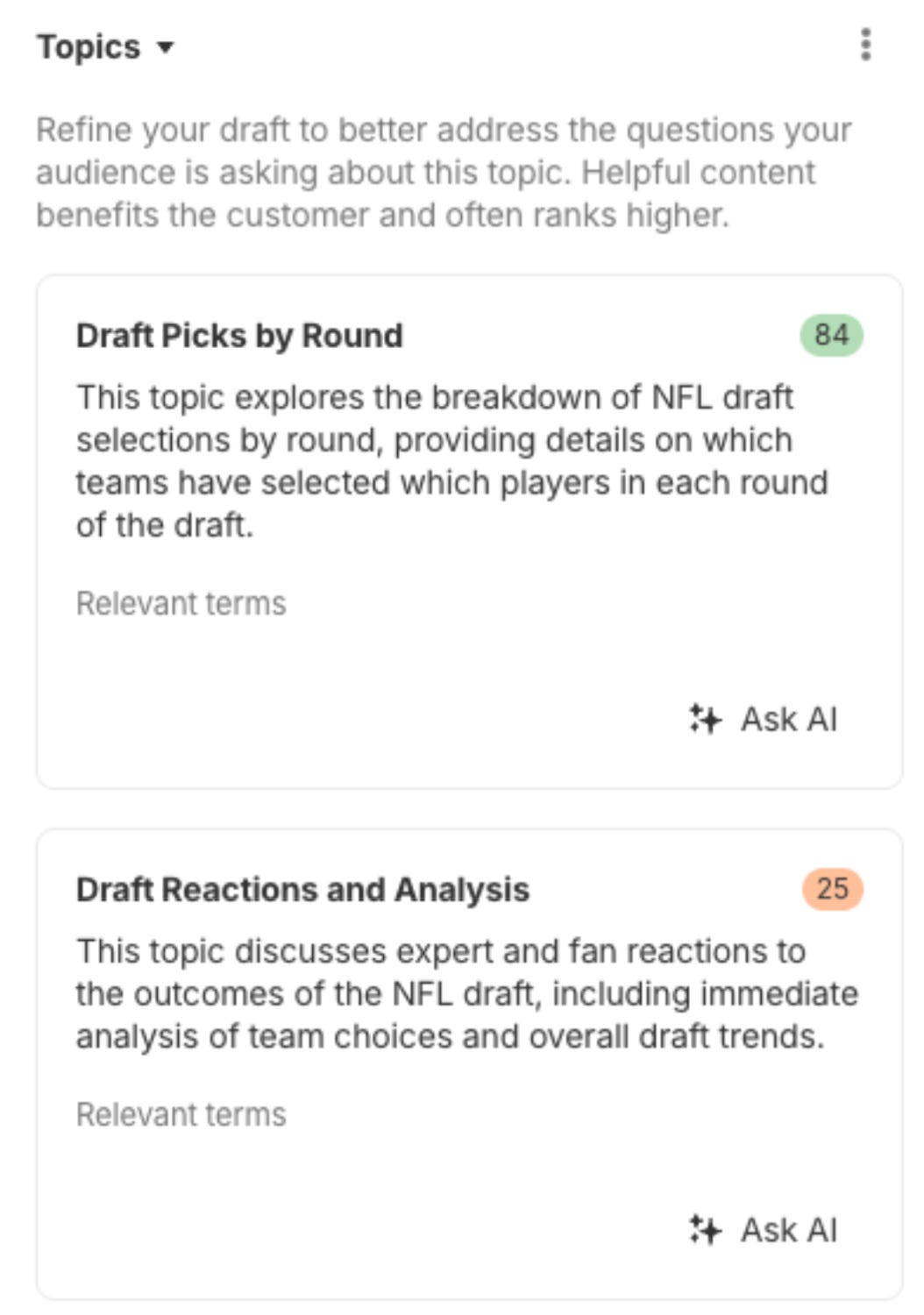
Why it’s helpful: The tool is extremely helpful in optimizing content for competitors and search intent. Stories cover so many branches of the news tree that it can be hard to know exactly what’s involved in your coverage.
Below, Ahrefs recommends different buckets of competitors and is organized by intent to help inform the suggestions made. This ensures the audience you target is correct.
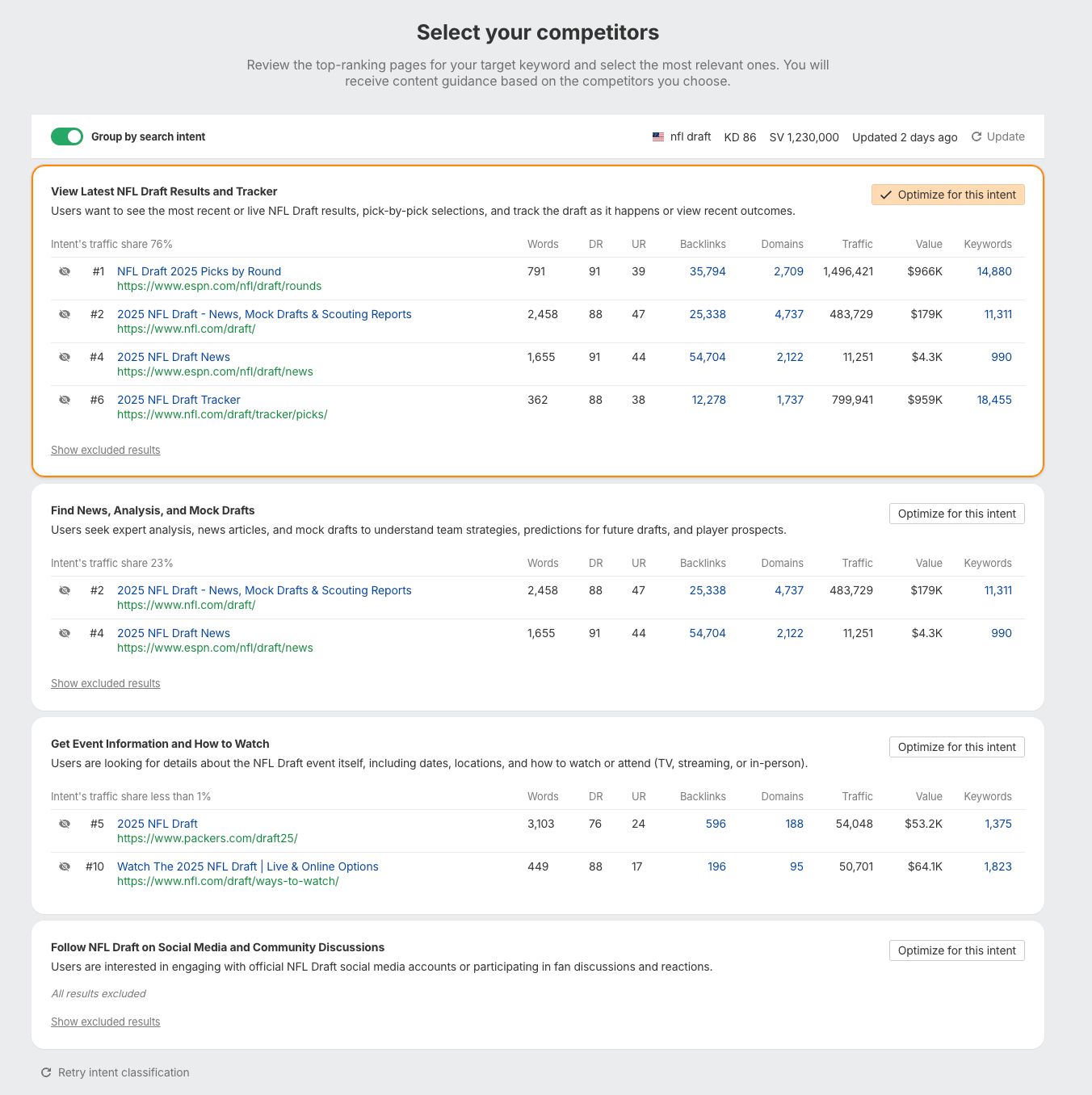
From here, it’ll provide suggestions on optimizing the headline, content format and potential additions — all of which can be added if the writer feels necessary.
The bottom line: AI tools can be helpful for mundane or tedious tasks, as well as understanding how these LLMs interpret your brand. Use these tools with care, and supplement with your own insights. And tell us what we missed!
#SPONSORED - The Classifieds
Get your company in front of more than 13,000 writers, editors and digital marketers working in news and publishing. Sponsor the WTF is SEO? newsletter!
RECOMMENDED READING
Google news and updates
🤖 Barry Schwartz: Google updates event and recipe structured data.
🤖 Emily Chang: An interview with Google’s CEO Sundai Prichal at the Bloomberg Tech Summit.
🤖 Barry Schwartz: There seems to be a bug with Google Discover GSC data (as of June 8).
🤖 Danny Goodwin: Zero-click searches rise, organic clicks dip, per a report from Datos and Sparktoro.
🤖 Barry Schwartz: Google AI Overviews and Bing Copilot have added Shorts to their AI answers.
Even more recommended reading
📖 Brian Morrisey: A look at Business Insider’s next chapter.
🔑 Rich Sanger: “Query fan out” isn’t new — it just actually has a name now.
🤔 Barry Schwartz: Google has reportedly been indexing less since late May 2025.
📉 Lea Scudamore: “Yes, Google sucks, AND…” The off-site reasons why organic is dropping across the board.
🧑🎤 Roger Montti: A respected search marketer challenges claims that Google's AI search requires complex strategies.
⚡ Francine Monahan: Why search has always been a brand channel.
🔗 Amanda King: Hallmarks of good enterprise SEO management.
🎉 Tomasz Rudzki: A look at Google Search Console’s huge search gap.
🔍 Aleyda Solis: Google's AI Mode Adoption vs Other Search Verticals via Similarweb clickstream data.
What did you think of this week's newsletter?
(Click to leave feedback.)
Catch up: Last week’s newsletter
Have something you’d like us to discuss? Send us a note on Twitter (Jessie or Shelby) or to our email: seoforjournalism@gmail.com.
Written by Jessie Willms and Shelby Blackley



